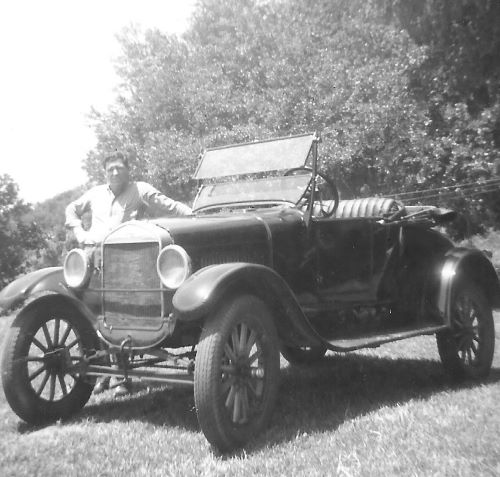Talent Hiding in Plain Sight
This story was originally published on the HealthSearch Group blog.
Many of us have played a mind puzzle that challenges us to find a hidden object within the picture. We scour the image, knowing the object is there, somewhere, waiting for our brains to register it. Recruiting talent for hard-to-fill jobs can be a lot like that.
One way to tilt the recruiting odds in your favor is to ensure that you don’t overlook talent that is hiding in plain sight.
Executives inherently know that human capital—i.e. talent—can give their organization a competitive edge, while unfilled jobs can create risks to productivity, revenue, and even safety. But, in a tight labor market, the reality is that competition for talent can be fierce. One way to tilt the recruiting odds in your favor is to ensure that you don’t overlook talent that is hiding in plain sight.

BEWARE UNCONSCIOUS BIAS
There is a growing business awareness that a diverse workforce offers distinct benefits, including better financial performance and decision-making. Companies are developing tools and processes to help combat overt prejudice toward, or against, people according to their race, gender, age, religious or political affiliation, and even education and social status. But the problem is that biases can be unconscious and insidious.
“If we don’t mitigate our bias, we eliminate good candidates to hire and to advance.”
According to Christopher Gross, founder and CEO with Ascension Worldwide, “The brain makes up stories very quickly.” For example, when we glance at a resume, we may not be aware of passing over good candidates because of something as simple as their name, like the powerful story of José Zamora, José to Joe: Who Gets a Job? It’s a similar case with gender or age bias or even perceived socioeconomic status inferred by where someone lives or where they went to school. “Class and privilege are things we don’t openly talk about and can be very stealthy. If we don’t mitigate our bias, we eliminate good candidates to hire and to advance.”
Gross explained how we can enhance our self-awareness and discernment through training and tools that help us to understand our own blind spots. “Some people call it mindfulness or awareness, but it’s important to avoid knee-jerk reactions when meeting someone.”
Some biases are the product of how our psyches process information. For example, the contrast effect is a type of bias that can influence our choices as we evaluate candidates. When reviewing multiple candidate resumes and interview performances, it is easy to become numbed by the numbers, or in this case the numbers of candidates. Instead of evaluating each one objectively-on their own merit-we begin to contrast them with the one seen just before.
DON’T OVERLOOK THE OVERQUALIFIED
When applicants have had responsibility, titles, and salaries that are more advanced than the role they are applying for, they are often dismissed without a glance as being overqualified.
It seems paradoxical that having too much experience would be a liability, but employers voice numerous concerns against hiring someone who is overqualified: the prospective employee will become bored; they will just use the new job as a stop gap and then catapult back to a higher salary; they might challenge the authority and expertise of their hiring manager; or left unsaid is that overqualified maybe euphemistic for “too old”—another unconscious bias.
Michael Mackin, a leading member of HealthSearch Group’s recruitment team, says it is important to vet candidates to understand their motivation for such a role, but Mackin counsels, “Don’t overlook the overqualified.” He adds, “There are a lot of highly qualified people who are ready for ‘phase-next’ in their careers but aren’t ready for retirement. They no longer need, or want, the duty and hours required by a higher- level role.”
Mackin points to an example of a job candidate who had been the Director of Nursing for a large academic medical center but who no longer wanted that level of responsibility and she was a great fit for a smaller hospital as a Nurse Manager. The hospital got to hire a highly skilled employee who didn’t command a higher salary, and the employee got a job that was a fit for what she was seeking.
“What could I do with this person’s talent?”

Dr. Corinne Kyriacou, Chair of the Department of Health Professions at Hofstra University, said there is a prevalent belief that older workers demand a higher salary because of their experience but that is not necessarily the case. “There is a large percentage [of older workers] who are looking for a second career and there is a real opportunity to have an alignment of hiring goals with an available pool of older workers.” She notes that there is also a loyalty component among older workers, who are looking to contribute and not necessarily still looking to climb the corporate ladder. Instead of making assumptions and dismissing older applicants, Kyriacou wish is that employers would look at those resumes and ask, “What could I do with this person’s talent?”
Much like the growing age-friendly states and communities, age-friendly workplaces are a cutting-edge concept. There is an emerging opportunity for executives to trickle down visionary practices that will help develop an age-friendly workplace. Kyriacou said, “To do that, companies need to engage their front-line hiring teams in changing the process. For health care organizations, this translates beyond their simply having a cross-generational focus for patients; it also crosses into the workforce across business divisions and levels.” She added, “Employers who do that will see a pay-off in terms of gaining talented and loyal employees.”
REMOVE BOTTLENECKS
One of the fastest ways to turn-off a prospective employee is to disrespect their time. Yet, too often, job candidates wade through the application and interview process, make it to the final round expecting to learn whether they will receive a job offer (or not), only to sometimes hear…radio silence. In this case, the prospective talent isn’t hidden but instead gets lost in the quagmire of inefficient hiring practices.
Workflow efficiency is a key quality metric in many business areas, but does it carry through to your hiring practices? Companies with an efficient vetting and decision-making process recognize that while you are in the process of evaluating the potential candidate to join your team, they are evaluating your organization as a prospective workplace.
Workflow efficiency is a key quality metric in many business areas, but does it carry through to your hiring practices?

According to HealthSearch Group recruiting veteran, Jamie Rudin, it is important to respect that once prospective employees are at the interview stage, they may be taking time off from work or rearranging other obligations in order to meet. “Ideally, candidates should know how many interviews are anticipated, what the sequence and process will be, the details of who they will be meeting with, how long the interviews will last, and other helpful details like where to park.” Rudin added the importance of closing the circle of communication and feedback. “Once someone has interviewed and if there is no intention to hire, then let them, or the recruiter, know as soon as possible.”
This Forbes Human Resources Council article offers a highly useful list of hiring bottlenecks and suggestions for how to avoid them. An interview guide from the Society for Human Resources Management offers advice that can be customized. Like with any checklist, the steps may seem simple, but as everyone knows, simple and easy are often not the same thing—seasoned professionals recognize the value in getting the fundamentals right.
SEEING THE OBVIOUS
The Invisible Gorilla experiment offers proof of just how unaware we can be (if you don’t believe that, take the test!) This well-known psychological study provides a vivid revelation of the how much our selective attention can cause us to miss and fail to then recognize something obvious, even after it has been pointed out to us. If our brains can fail to see this much of the evident, much less the hidden, think about how much talent we might find by taking steps to see more clearly the human capital we are missing today.







